

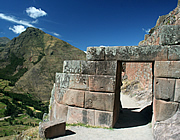
It sounds magical and mysterious, and it lived up to all our hopes and expectations, with Inca villages and ruins throughout its mountainous borders. The morning walk through Pisaq ruins was one of the highlights of our whole South American trip.
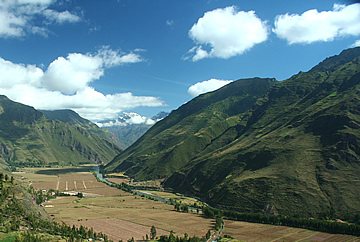
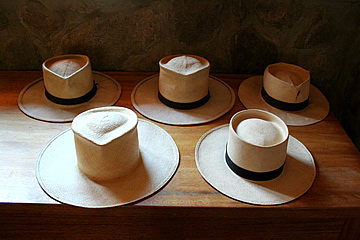
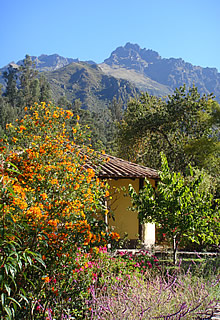
This wide fertile valley of the Urubamba or Vilcanota river was one of the main areas for crop production for the Incas. It stretches between Ollantaytambo in the west to Pisac in the east, a distance of about 50km as the crow flies. The steep mountainsides are covered with old terraces, a testament to the fertility of the valley.
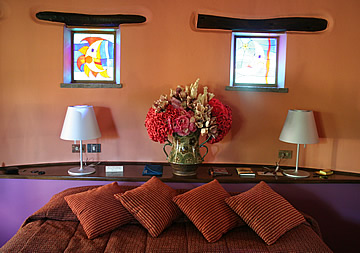
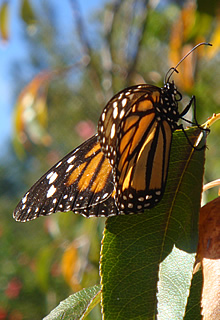
We stayed in the beautiful Sol y Luna, just outside the town of Urubamba - an excellent base from which to explore the Sacred Valley.
The rooms are in individual bungalows, decorated in ethnic style and with their own shady verandah set in beautiful gardens which extend over quite an area, down to a large stables.
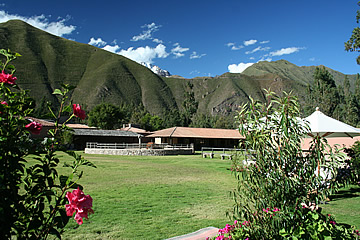
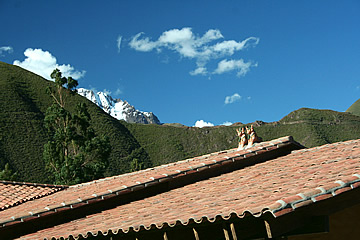
In the evening, when it was quite cold, both restaurants lit great fires. We preferred the restaurant down at the stables which had a more relaxed atmosphere. We had drinks in the bar in comfortable armchairs in front of the roaring fire. The Chandon champagne from Argentina was very good, the same House as Möet. Walking back the Milky Way was stretched across the sky.
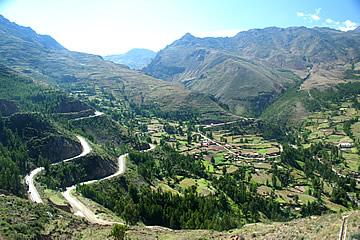
Though this town has a colourful market, we were much more interested in the Inca fortress high in the mountains above. This long, leisurely walk through the ancient ruins of Pisac was one of the highlights of this South American trip.
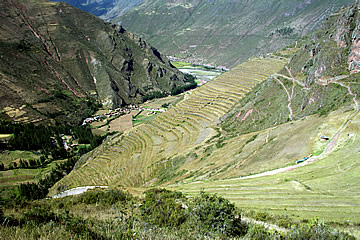
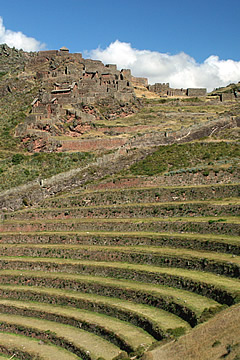
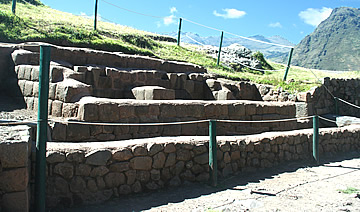
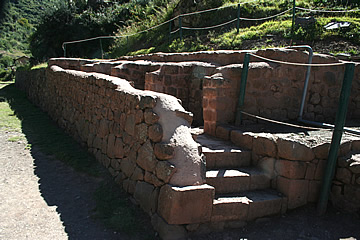
We were driven most of the way up the mountain then walked with our guide along ancient Inca trails through temples and terraces with stunning views over the Sacred Valley.
First was Kanchiracay, an agricultural area, with fine terraces and a residential area enclosed behind walls but right on the edge of the settlement so it may have been defensive in nature - the position has an excellent overview of the approaches on the ridge.
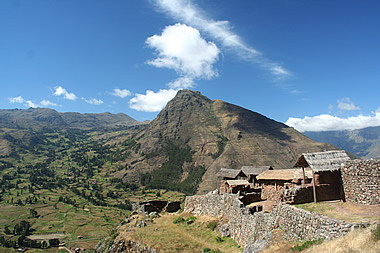
We then came to the fountains of the Inca baths. The Incas were adept at harnessing natural water and channelling it over long distances for their needs. There were two channels in the fountains but no water flowed when we were there.
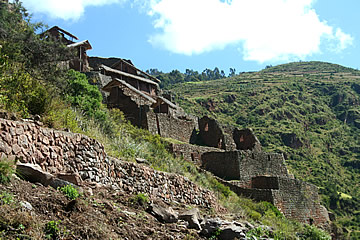
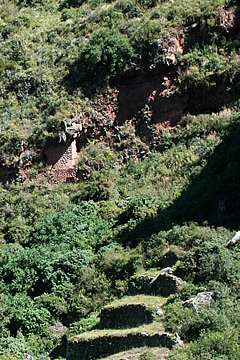
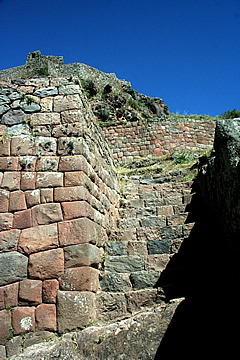
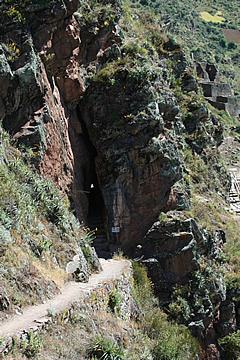
On the other side of the gorge to the fountain was one of the largest Inca cemeteries ever discovered. More than 1000 tombs had been dug into the steep valley side, high up, but they have still been robbed and are mostly in a very poor state.
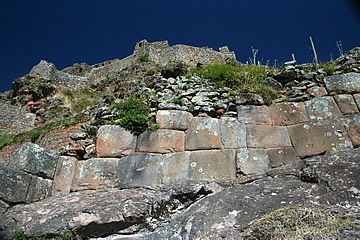
Further on we passed through a beautifully curved entrance to the fortress, above us Inca walls crossed the steep mountainside, pierced by staircases.
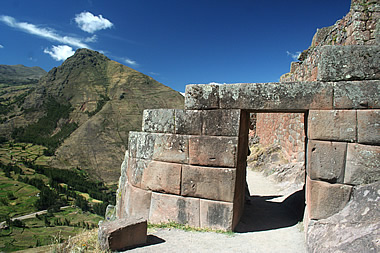
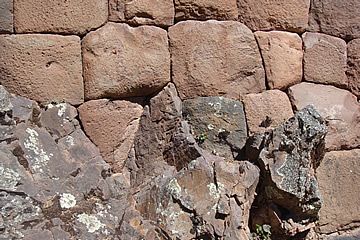
The impressive Inca walls are built directly onto the bare rock, ingeniously worked to fit as close as if they were moulded together.
A very narrow tunnel then carries the path forward through about ten metres of rock. It separates the site into two parts and would have been an excellent line of defence.
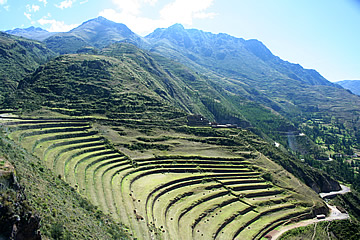
Coming out of the tunnel, the area known as Pisaq, from which the ruins and the colonial town take their name, can be seen perched below on a ledge above the valley. This is a residential area and as the stonework is a bit finer than elsewhere it is thought to be the more up-market spot to have a home, perhaps for the priests of the temple?
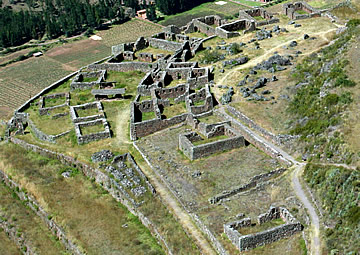
Pisaqa in Quetcha is the name for the Andean partridge and the origin of the name of the settlement.
High up is an area known as Q'Allaqasa, where there are military installations in the form of watch towers - perfectly positioned to give advance warning of an attack, or of any approaching visitors.
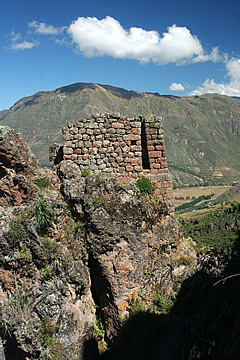
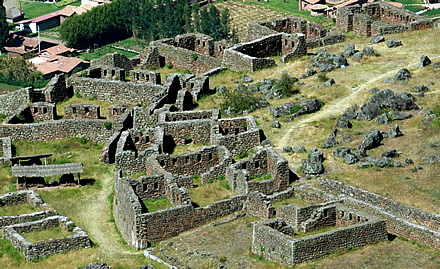
Descending from here we came to the incredible ceremonial area. It is perched on a ridge, high above the Urubamba river, at its entrance further down the other side are ritual fountains, possibly used for cleansing before entering the temple area.
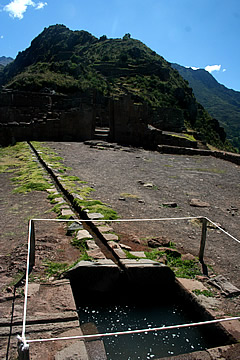
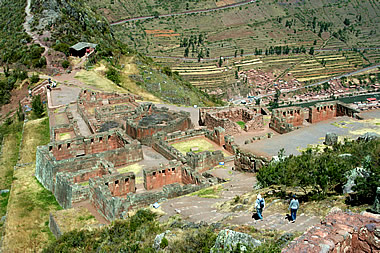
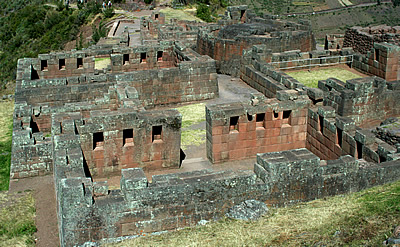
This complex is regarded as one of the finest examples of Inca architecture with the best stonework to be seen in any Inca site.
The Intihuatana is the focus, the "place where the sun is tied". This is a large natural rock, much damaged by the Spaniards and, even more sadly, by local vandals. It is surrounded by a circular wall.

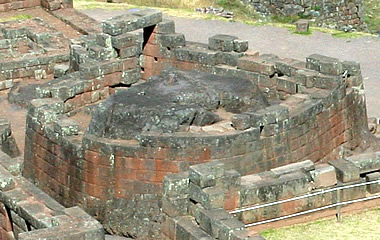
There is a Temple of the Moon close by.
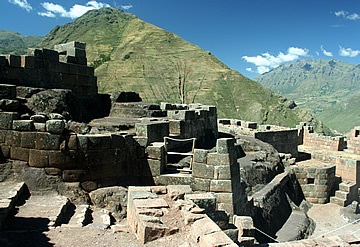
Water channels run between the buildings, into stone basins and baths.
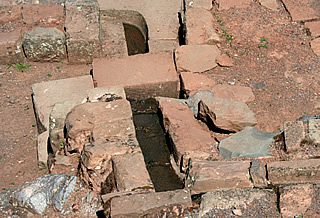
The doors, windows and niches are all the typical trapezoid shape, and the walls all slope inwards giving extra strength to the buildings.
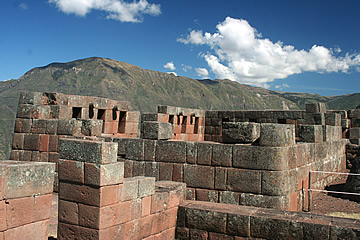
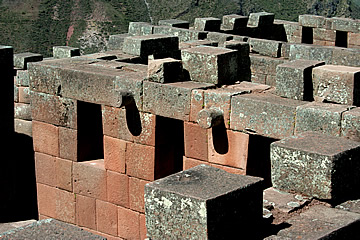
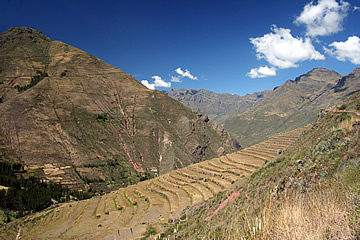
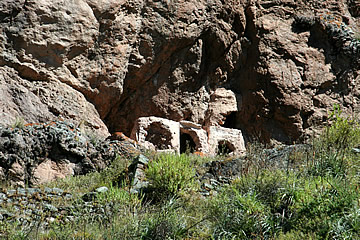
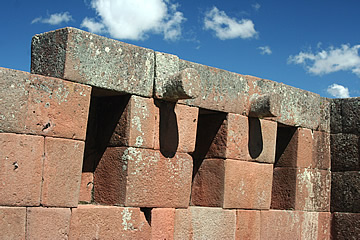
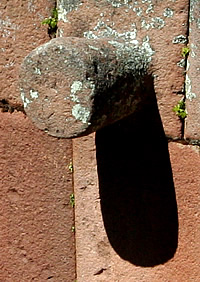
Along the inner walls above above the window level are stone blocks with cylindrical tapered posts extending into the interiors. It's not known what they were used for - they don't appear on all walls or in all buildings. But for sure they display far higher craftsmanship than those to be seen at Machu Picchu.
As we descended we passed more terraces, with larger flat stones jutting out, strategically placed and used as steps. There were also more tombs and tantalising stretches of perfect wall - there must still be a lot to discover here.
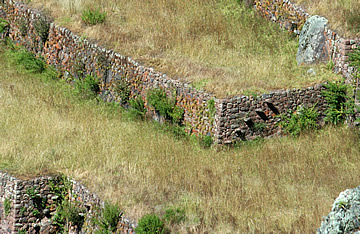
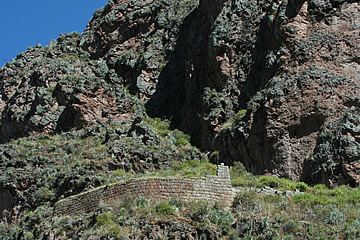

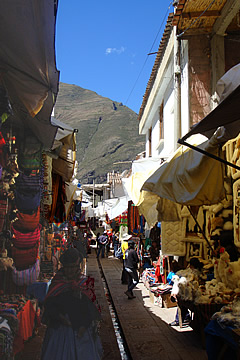
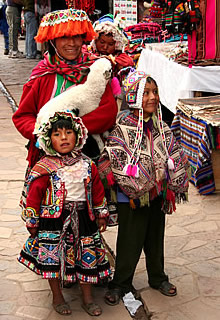
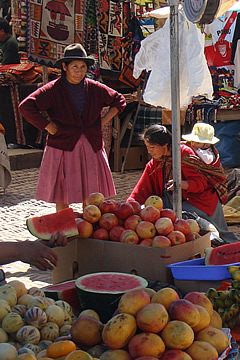
Back on the valley floor we made a brief visit to the colourful market - it is mainly full of stuff for tourists, though there are authentic local crafts for sale too, and there were areas where local people were selling their produce.
We had a snack of empanadas cooked in an outdoor clay oven - they were excellent: freshly cooked pastry pockets filled with succulent chicken in some kind of sauce. The clay bulls and cross on the top of the oven is a good luck device, usually found on houses.The man cooking these was the only one we saw in traditional dress - there were plenty of women and children dressed up for the tourists to take photographs of, but no men.
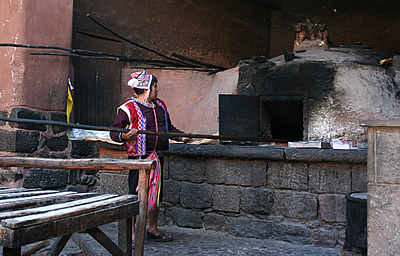
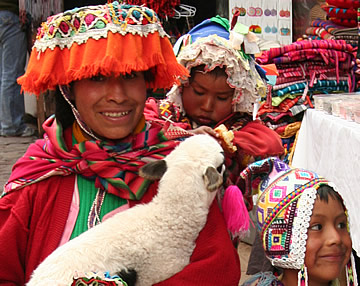
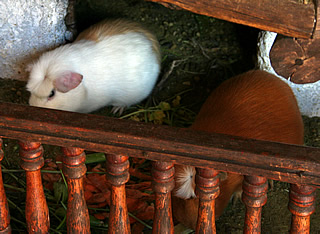
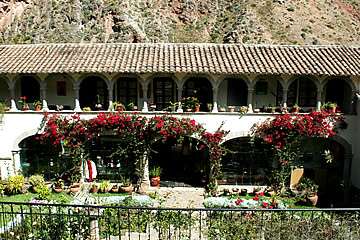
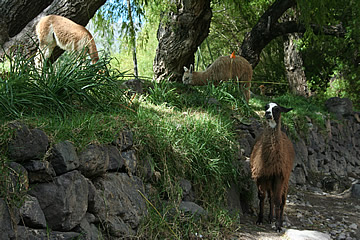
During our exploration of the valley we stopped for lunch at a couple of restaurants chosen by our guide and generally catering for tourists. The loveliest location was Tunupa Valle on the banks of the Vilcanota between Ollantaytambo and Urubamba. It offered a huge buffet of salads, meats, rice and very good chocolate cake. We had chicha to drink, made from unfermented red corn, which tasted very good and is also supposed to lower blood pressure.
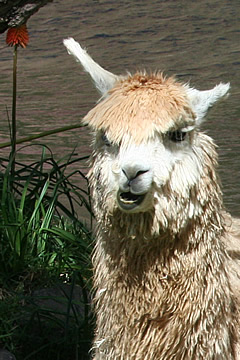
Down by the river there were llama, alpaca and a beautiful vicuña - the most adorable of creatures. We ate outside where there were Peruvian musicians playing - very atmospheric.
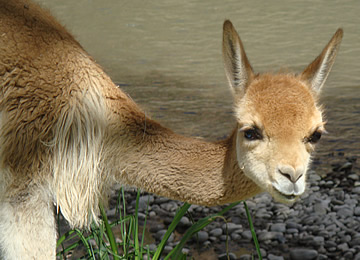
We felt, though, that the better food was at a restaurant very close to the Sol y Luna on the road to Ollantaytambo - unfortunately I can't remember the name, possibly Maras. It had a great selection of food including guinea pig, alpaca meatballs and chicken.
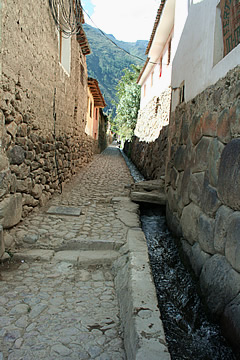
This Inca town was the domain of Emperor Pachacuti (1438-1471) which he rebuilt to include temples and magnificent terraces. These are evidence of a high class estate as their retaining walls are made from cut stones, rather than unworked field stones.
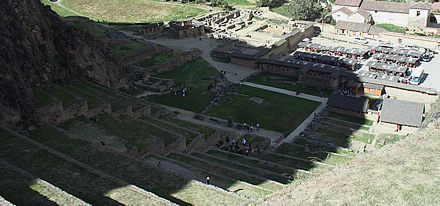
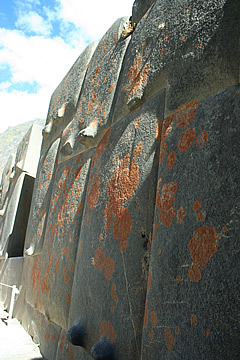
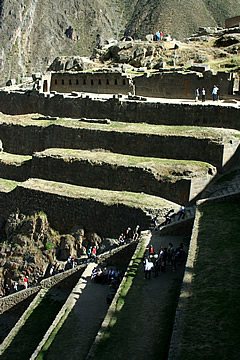
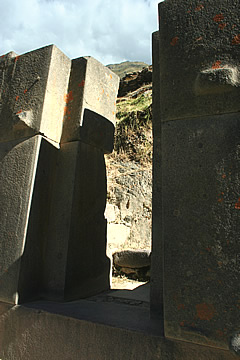
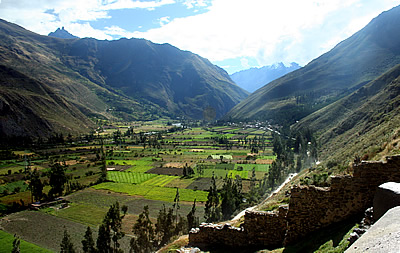
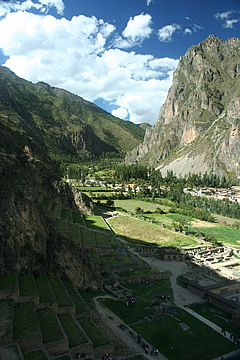
Manco Inca Yupanqui (1515-1544) successfully defended the town from Spanish attacks in 1536 at what became known as the Battle of Ollantaytambo. The terraces were used by the Incas to rain down missiles on the Spaniards who approached along the valley floor.
Much of the Inca architecture is still in use today by the townspeople.
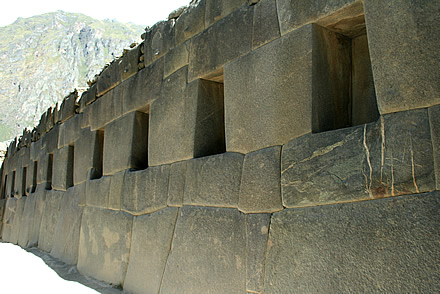
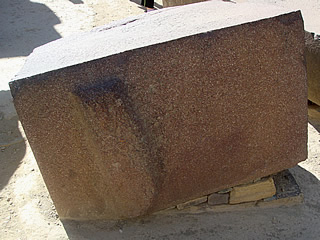
We climbed the stairways through the steep terraces to the ceremonial area high above the town - fabulous views up and down the valley.
The buildings are unfinished and many cut blocks litter the site. It is supposed that building or renovation work was interrupted, perhaps by wars.
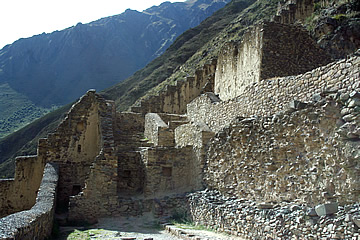
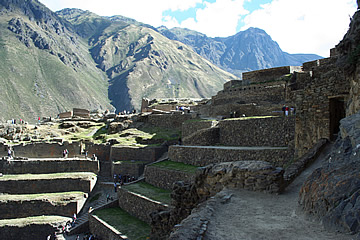
Many blocks, both in walls and as unfinished pieces, have protruberances, lumps or ridges. It's not known precisely what their purpose was, maybe to help in manoevering the blocks into place, though this does not explain why so many, in finished walls, remain. The Inca were so meticulous with their stone-carving it would be expected that anything without further purpose would have been smoothly chiselled off.
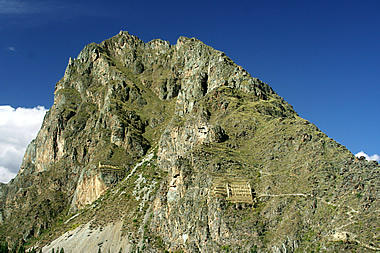
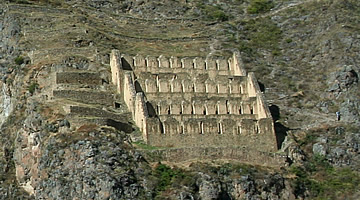
As we were walking among the terraces, we could see across the valley on the opposite mountainside some of the storehouses built by the Inca high up above the valley floor. Apart from being cool and well-ventilated these would also be quite difficult to raid.
Apparently the Inca filled the stores from an opening on the up side, and took grain from an opening on the downhill side.

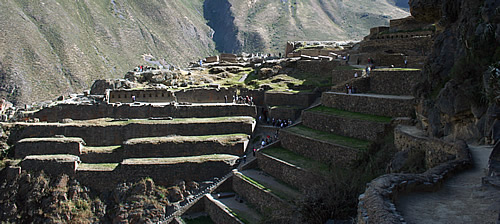
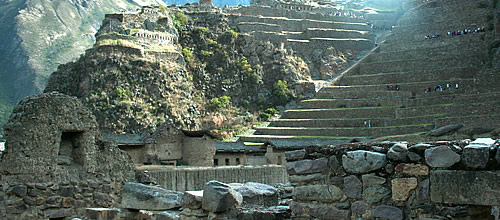
After exploring the ceremonial area we walked along a mountainside Inca trail and descended into the remains of the Inca site known as Qellu Raqay.
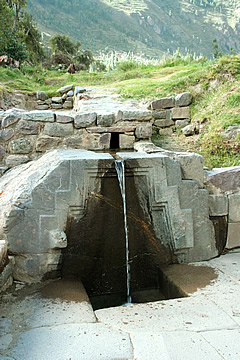
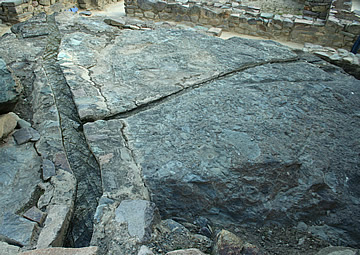
Qellu Raqay may have been a palace, almost certainly a temple complex. The site is remarkable for its intricate water channels and fountains, the most beatiful being the "Fountain of the Princess".
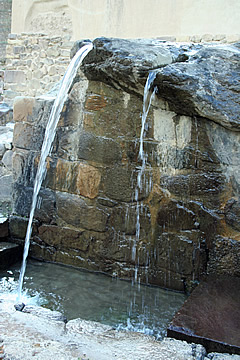
There is a square building identified as a water temple which was obviously of huge significance to the Inca. Water was sacred, of course, and the building houses a fountain. Two huge double-recessed niches flank the massive entrance - all features which signify importance.
